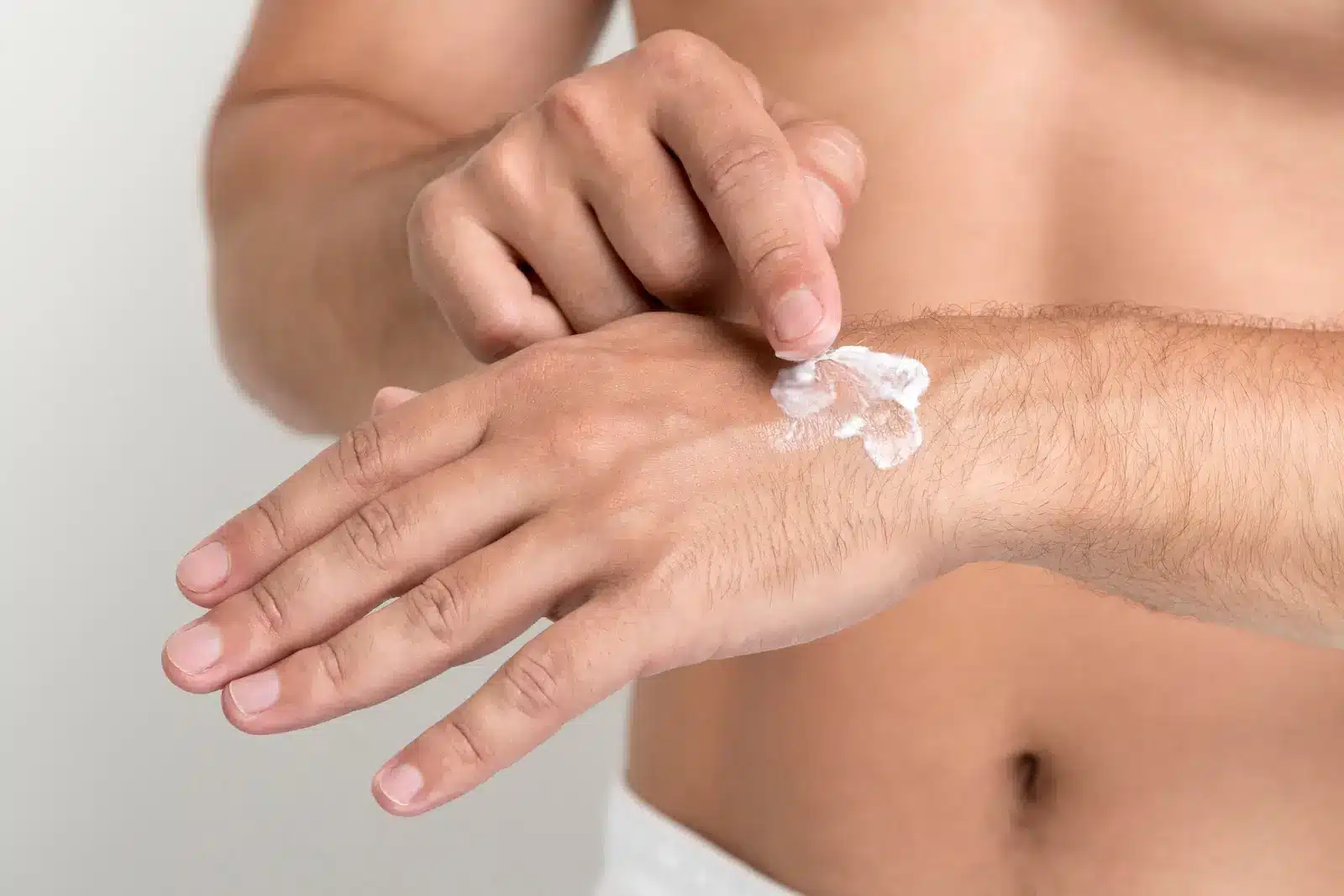Business Hours: Monday - Friday: 9 AM - 6 PM EST

EMLA Cream Generic Name – About Lidocaine/Prilocaine
David Fuller
Last Updated On: April 4, 2025
Lidocaine and prilocaine are a dynamic duo in the world of topical anesthesia. When combined, these two local anesthetics deliver effective numbing for minor surgical and dermatological procedures. From venipuncture to laser therapy, their synergy enhances both the depth and duration of anesthesia—making procedures more comfortable for patients.
One of the most well-known products featuring this combination is EMLA cream, a trusted topical anesthetic used in both clinical and cosmetic settings. Knowing what’s inside—specifically the active ingredients—can help users and practitioners better understand how it works and how to use it safely.
In this article, we’ll explore the generic name of EMLA cream, its active components (lidocaine and prilocaine), and how they work together to deliver reliable topical pain relief.
Key Takeaways
- EMLA cream is a topical anesthetic that combines two local anesthetics, lidocaine and prilocaine, to work synergistically to provide adequate pain relief during medical and cosmetic procedures.
- Lidocaine and prilocaine block sodium channels in nerve cells, preventing pain signals from reaching the brain. This synergy results in more profound and longer-lasting anesthesia than using either agent alone.
- EMLA cream is absorbed at varying rates depending on the skin area. In rare cases, lidocaine and prilocaine are metabolized in the liver, with prilocaine potentially affecting oxygen-carrying capacity.
- While effective, EMLA has safety considerations, including potential drug interactions with antiarrhythmics and specific agents that can induce methemoglobinemia. Contraindications include severe liver disease and hypersensitivity to amide anesthetics.
- For safe prescribing, minimal effective dosages should be used, and application times should be adhered to. Patients should be educated on proper usage, risks, and where to obtain EMLA cream from verified sources.
- EMLA cream is effective for pain management before minor procedures, including dermatological treatments and tattooing, making it a versatile option in various clinical settings.
About: Operating since 2016, Med Supply Solutions is known for being one of the industry’s top and trusted suppliers of cosmetic and viscosupplementation products. If you’re looking to buy EMLA cream online, contact our sales department for more information.

Composition and Pharmacological Properties of Lidocaine and Prilocaine
EMLA cream combines two local anesthetics—lidocaine and prilocaine—to create a topical numbing effect suitable for minor medical procedures, dermatological treatments, and cosmetic interventions.
- Lidocaine: A fast-acting anesthetic that quickly blocks nerve signals, reducing surface pain.
- Prilocaine: A slightly slower onset that extends the numbing effect and enhances lidocaine’s action.
Together, they create a balanced, long-lasting anesthetic effect, making EMLA a preferred choice in clinical settings.
Mechanism of Action: Synergistic Effects in Topical Anesthesia

Lidocaine and prilocaine act by blocking sodium channels in peripheral nerve endings, halting pain signal transmission to the brain. Their combined action provides a deeper and more prolonged numbing effect than either agent alone.
- Lidocaine begins working within 20–30 minutes.
- Prilocaine takes longer but extends the duration of anesthesia.
- The combination reduces systemic risk by minimizing the dose of each individual anesthetic.
This synergy is what makes EMLA cream highly effective for pre-procedure pain relief.
Clinical Pharmacokinetics: Absorption, Systemic Availability, and Metabolism
When applied correctly, EMLA cream’s generic formulation is absorbed through the skin at varying rates, depending on skin thickness and application time.
- Absorption: Faster on thinner skin (like the face), slower on thicker areas (e.g., palms, soles).
- Systemic Availability: Typically low, but absorption can increase with large surface applications or prolonged use.
- Metabolism: Lidocaine is processed by the liver’s CYP system. Meanwhile, Prilocaine metabolizes into o-toluidine. In rare cases, this may affect blood oxygen-carrying capacity.
Safety Profile: Potential Drug Interactions and Contraindications
While generally safe, generic EMLA cream may interact with certain medications and is contraindicated in specific patient groups.
Drug Interactions to Watch For
- Antiarrhythmic medications (e.g., amiodarone) may intensify lidocaine’s systemic effects.
- Methemoglobinemia-inducing agents (e.g., sulfonamides, nitrates) can elevate the risk associated with prilocaine.
- Beta-blockers may slow lidocaine metabolism, prolonging its duration.
Contraindications
- Known hypersensitivity to amide anesthetics
- Severe liver dysfunction
- Patients with or at risk for methemoglobinemia
Proper assessment before use reduces complications and ensures safe application.
Guidelines for Safe Prescribing and Patient Education

To ensure safe, effective results, practitioners should follow these core guidelines:
Prescribing Tips
- Use the lowest effective dose to minimize systemic exposure.
- Apply 30–60 minutes before procedures based on the desired anesthetic depth.
- Avoid treating large surface areas unless medically necessary.
Patient Education
- Apply exactly as instructed; avoid broken skin.
- Store EMLA in a cool, dry place, away from heat.
- Seek help if side effects like pale skin, dizziness, or breathing difficulties occur.
- Educate patients on where to buy EMLA cream—always from verified medical suppliers or pharmacies to avoid counterfeit products.
Empowering patients with knowledge ensures both safety and optimal results.
Conclusion
Formulated with lidocaine and prilocaine, EMLA cream is a trusted topical anesthetic for a variety of medical and cosmetic applications. Its synergistic action, manageable safety profile, and controlled absorption make it a reliable option for pain reduction.
By following prescribing protocols and educating patients, healthcare professionals can ensure EMLA is used effectively and responsibly.
FAQs
1. How long does EMLA cream take to work?
Depending on skin thickness and application area, EMLA cream typically takes 30 to 60 minutes to effectively numb the area.
2. Can I use EMLA cream for tattoo procedures?
EMLA cream can be used before tattooing to minimize pain, but it should be applied at least one hour before the session for optimal results.
3. Is EMLA cream safe for children?
EMLA cream is approved for pediatric use but should only be applied under medical supervision, particularly for infants under three months old.
4. Are there alternatives to EMLA cream?
Yes, alternative numbing creams with lidocaine-only formulas or benzocaine-based products exist, but they may not provide the same depth of anesthesia as EMLA.
References
Emla Cream: Uses, Dosage & Side Effects. Drugs.com. https://www.drugs.com/emla.html
MIMS Philippines. EMLA Mechanism of Action. Available from: https://www.mims.com/philippines/drug/info/emla/mechanism-of-action
Products
Cart
Log In
Newsletter
Subscribe for exclusive offers and updates on new arrivals
Share feedback at:
Working Hours
Monday to Friday: 9 AM to 6 PM EST
The Most Popular Brands
Med Supply Solutions
Support
Copyright 2025. Med Supply Solutions